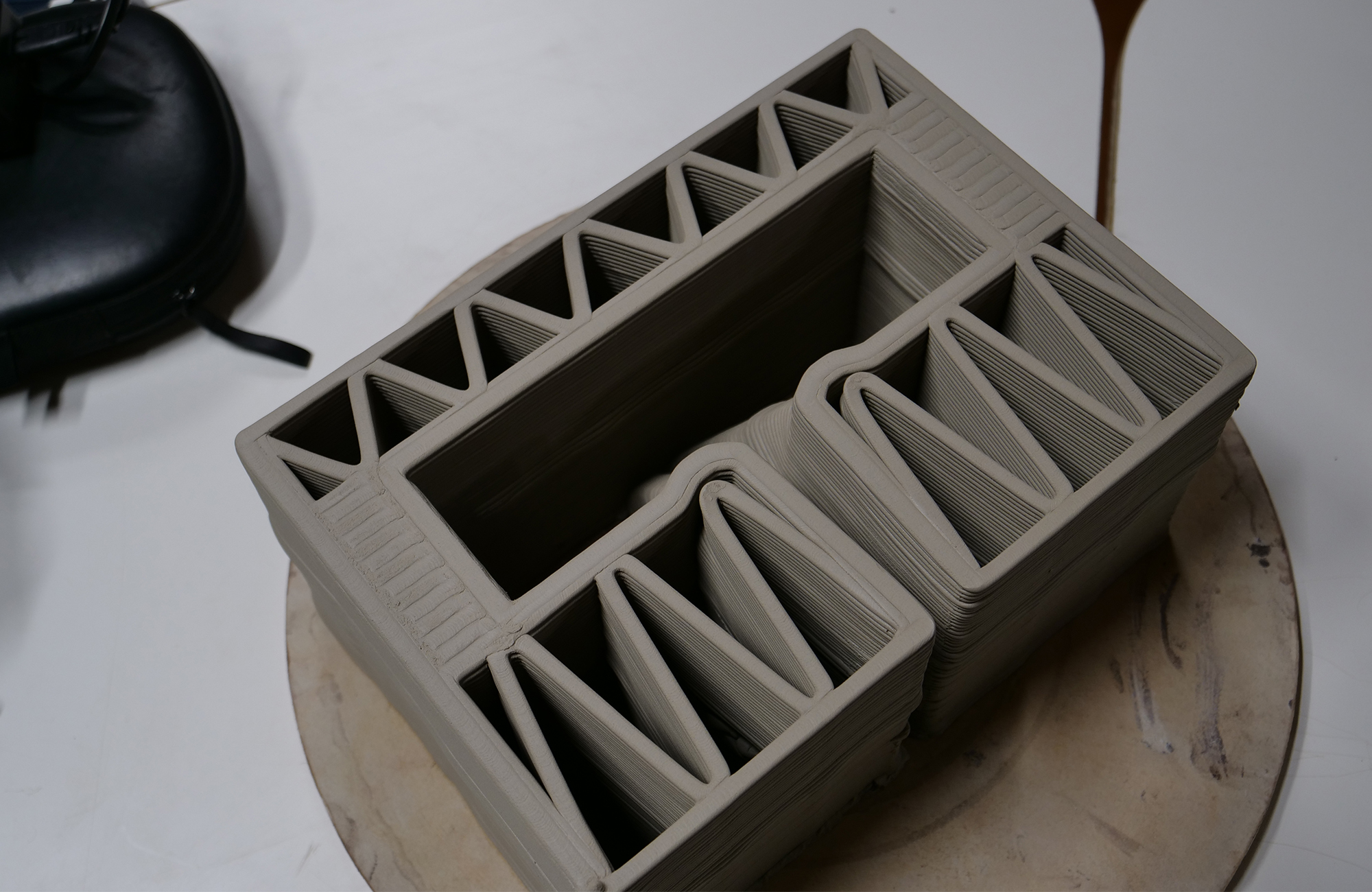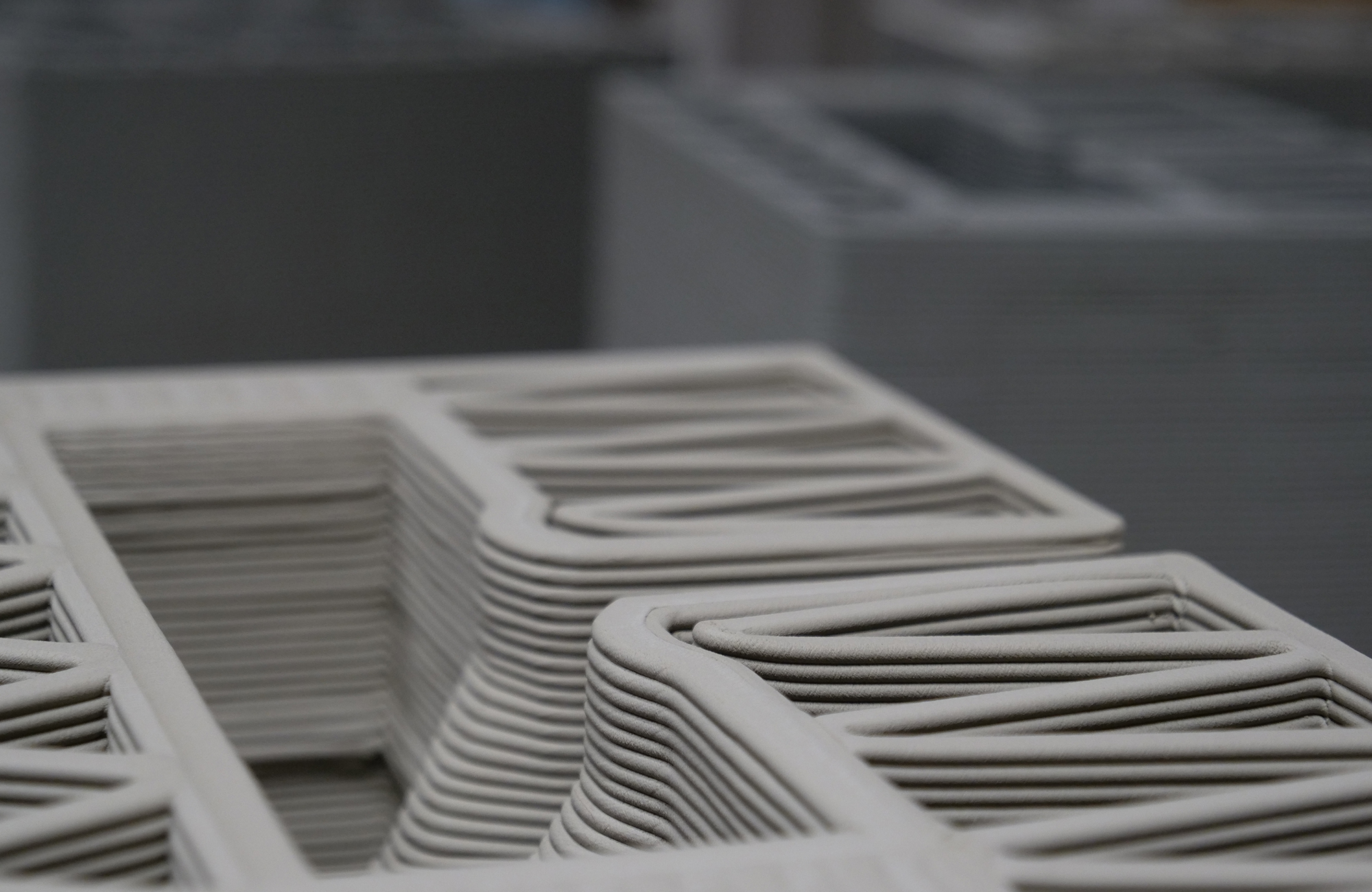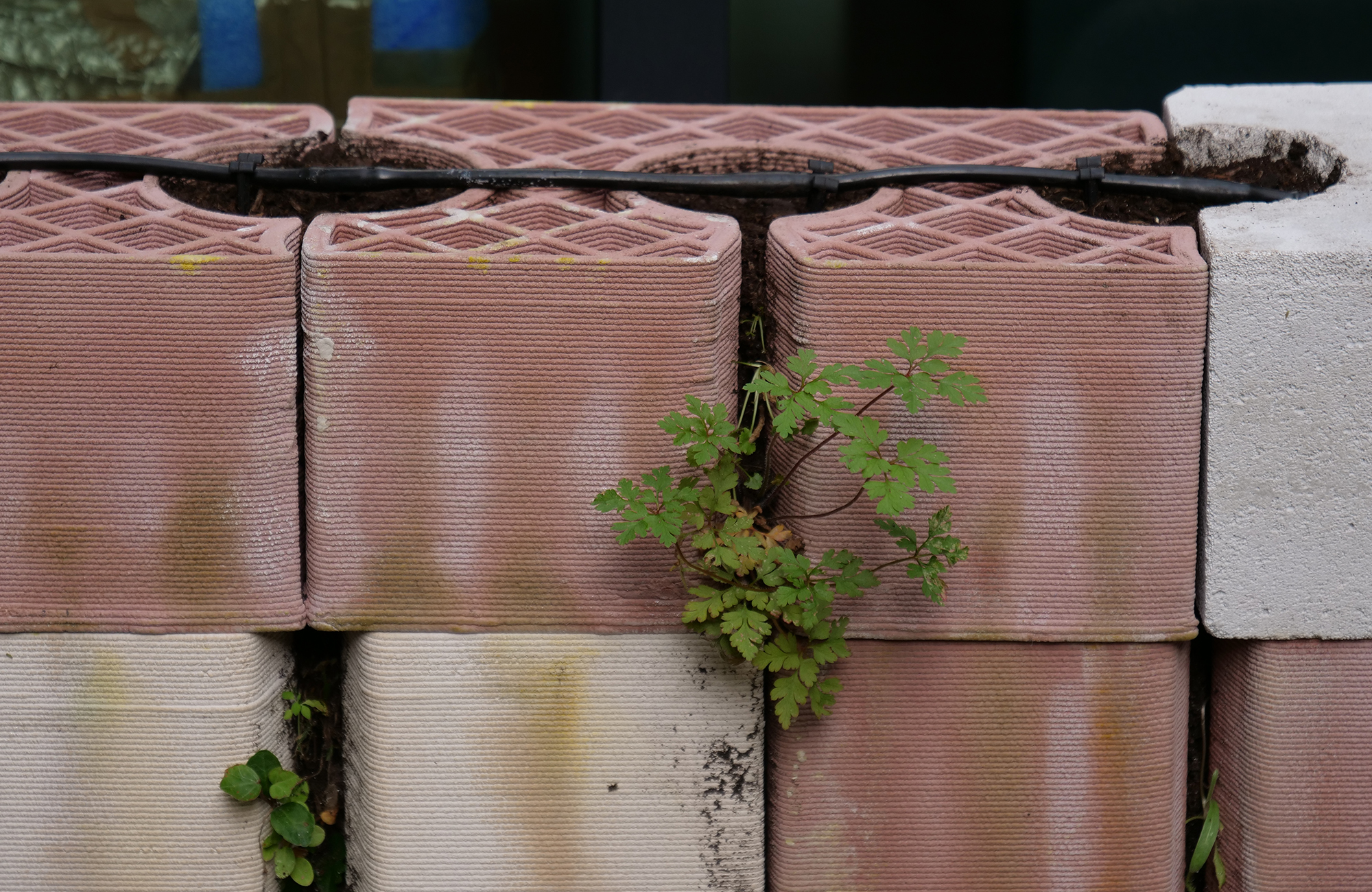
I.S.A Biodiverse bricks are part of the continuum of the research carried out by our agency for several years, on hosting life in architecture.
The novelty of the biodiverse wall concept lies in the plant’s ability to establish itself permanently in a layer of substrate integrated into the composition of the wall.
So that the façades not only embody the external appearance of our buildings, but can also be a living medium, as part of a broader concept of integrating nature into architecture.
After the concrete biodiverse wall and the prototypes of rue Buffon, this new stage in our research has led to the prototyping of biodiverse building blocks I.S.A. 1.0 (1st version). These were then assembled to form a wall that was sown in the summer of 2023 to follow the evolution and integration of life in this new system.

To open the research to a production model that can be easily industrialised and reproduced, the investigation is conducted from the construction element that will make up the vertical system: the brick.
I.S.A. Biodiverse bricks are inspired by popular clay building materials such as bioclimatic “monomur” type honeycomb bricks which combine structural and insulating characteristics. They are designed to be insulative, structural and capable of hosting vegetation to meet both architectural and biodiversity development needs.
The choice of clay is linked to both natural qualities of the material and proximity of supplies. It’s a local resource, abundant in France, and requires little processing to be implemented. Clay has physical characteristics that are compatible with hosting a substrate. Terracotta, obtained by firing clay, responds perfectly to direct contact with the soil: it guarantees a quality heat exchange, contains almost no VOCs (Volatile Organic Compounds), presents a low Ph value and acts as a natural antifungal, limiting the development of moulds.
The I.S.A. biodiverse brick prototypes are produced using ceramic 3D printing.
The design of the honeycombs has been completely reworked to adapt to this technique. Recent and constantly evolving technology that is increasingly associated with the world of construction, 3D printing also makes it possible to use clay to make the brick prototypes. The only constraint inherent in this instrument is to think of the model as a repetition of strata whose drawing is carried out in a single continuous movement, as if we were drawing without lifting the pen from the page. The clay prototypes were created using 3D printing, thanks to the material and technical support of the 8fablab manufacturing laboratory.
The first bricks, I.S.A. 1.0, have cells for insulation and three recesses for alternating row construction and substrate continuity.
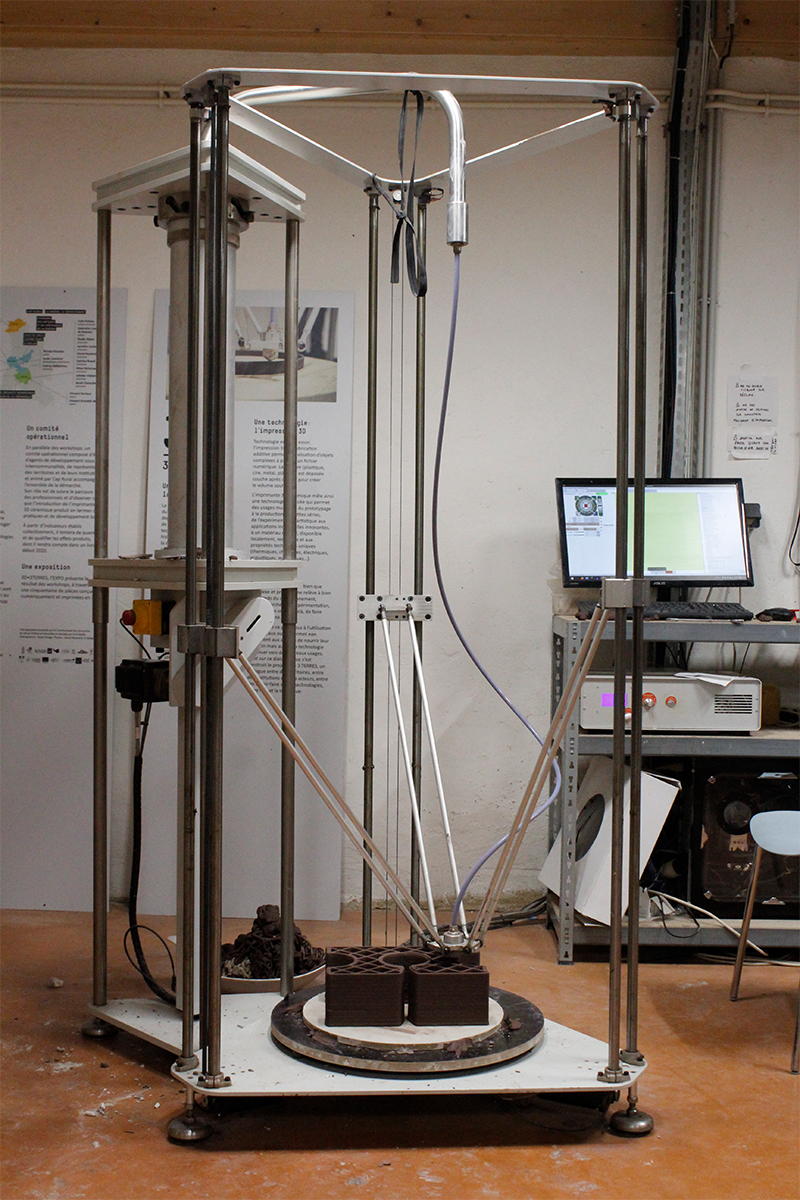


A test wall has been installed in one of the office’s courtyards in order to follow the development of life inside the construction and on its façade.
The inside of the bricks is designed to accommodate a sufficiently large volume of substrate to allow biodiversity to develop there. Assembling the bricks in staggered rows creates vertical spaces where the substrate can be laid out in "soil columns". This interior continuity of the soil is extended by its direct contact with the ground.
The surface of the brick visible from the facade is slit with an opening allowing exchange between the substrate at the heart of the wall and the outside, ensuring the development of vegetation. This opening is precisely calibrated to prevent the substrate from drying out while encouraging the interaction of the interior system with its environment.

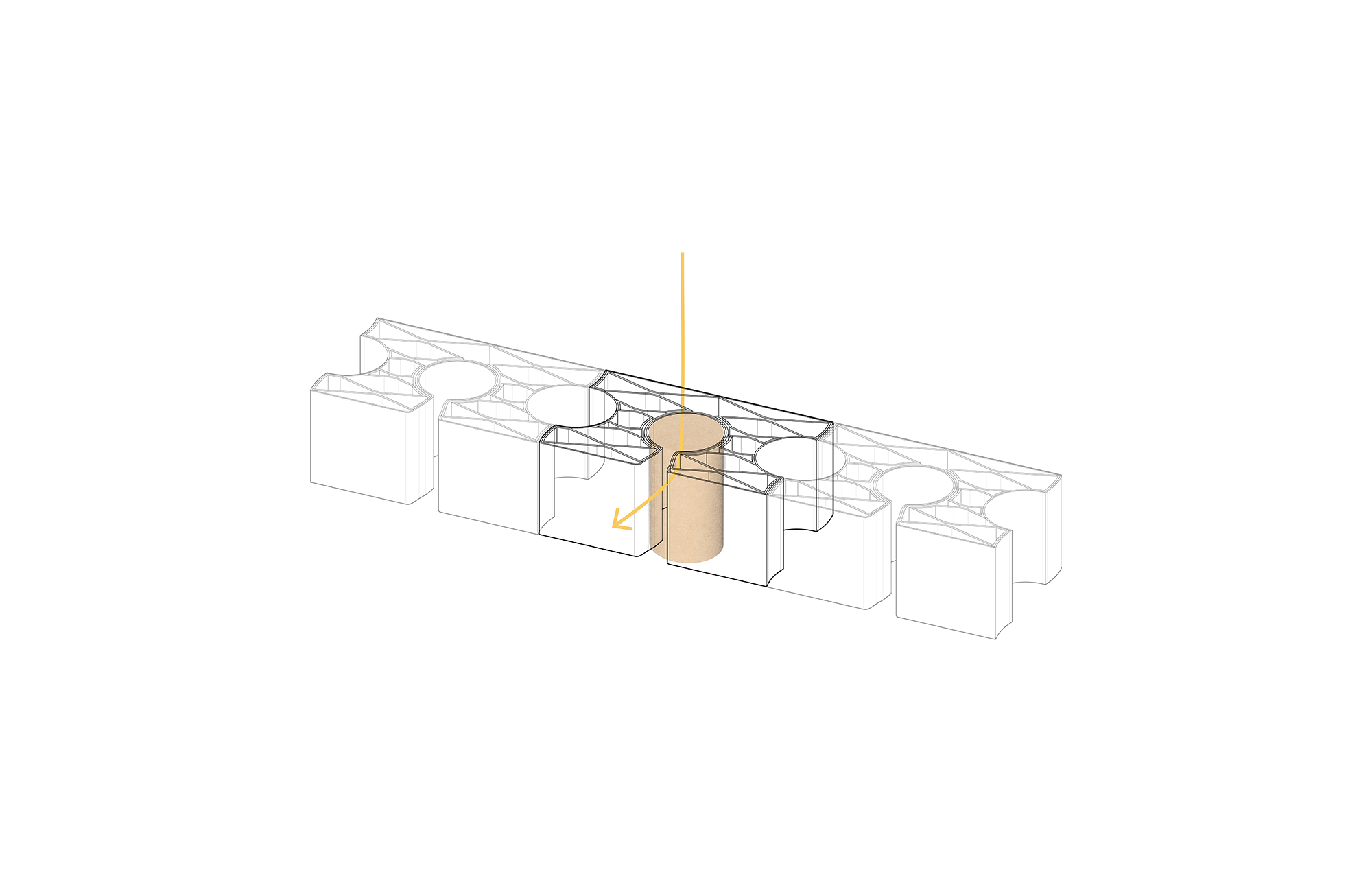


The study of the wall composed of I.S.A. 1.0 biodiverse bricks over several months led to the prototyping of a second type of brick: I.S.A. 2.0.
The adjustments made to the first version of the brick prototype concerned water management, insulation, and structure.
The shape of the bricks has been redesigned to improve vertical water circulation and prevent leaks between the bricks. Improved insulation means that the substrate is better protected from external variations. Finally, the structural reinforcement makes the structure more resistant to assembly and over time, and less sensitive to handling.
The I.S.A. 2.0 biodiverse brick prototype now consists of a single substrate reservoir running the entire length of the brick. An excrescence is added inside this void, on the surface of the brick opening. The progressive variation in size over the height of the brick frees up more volume for the substrate towards the top of the brick. More connections are also allowed between the bricks, ensuring greater continuity for biodiversity within the wall.
